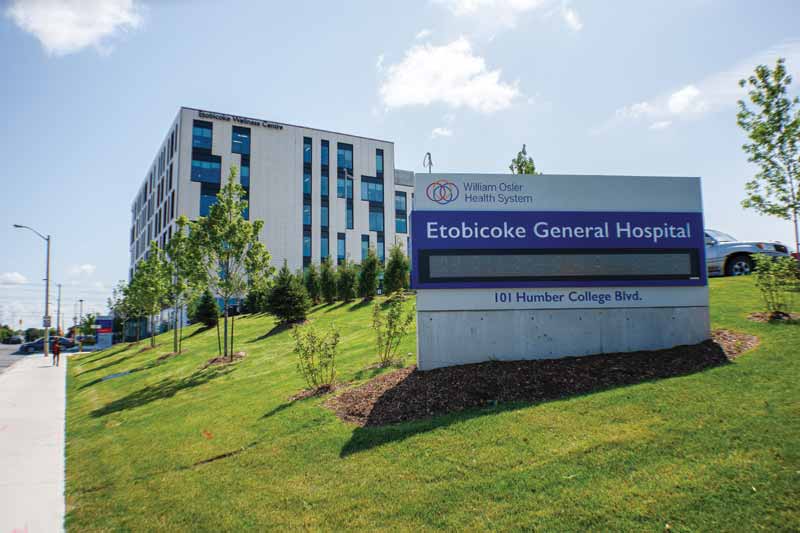Twilight Signs: Designing brands as experiential spaces
by | 10 October 2019 10:03 am
By Sonia Yooshing
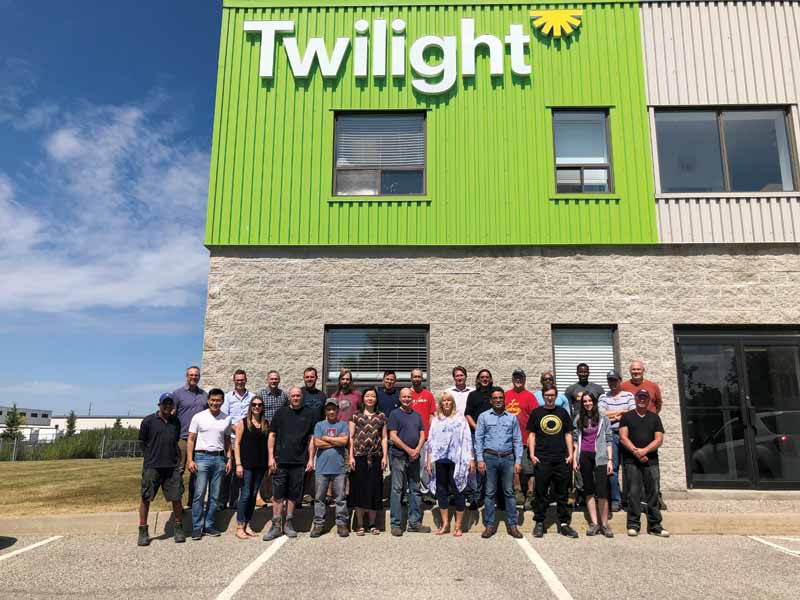 [1]
[1]At Twilight Signs, anything is possible with branded spaces. The team believes there has never been a more exciting time than now to work in multiple dimensions and engage all the senses.
In the digital age, every physical space needs to justify its existence by offering an extraordinary experience—one that cannot be found online. So, when the time comes to build or renovate a space, one must do it right or not do it at all.
At Twilight Signs, anything is possible with branded spaces. The team believes there has never been a more exciting time than now to work in multiple dimensions and engage all the senses. When a job is done right, it has the power to attract its audiences, and these Bolton, Ont.-based signmakers know exactly how to captivate imaginations through their impactful signage and immersive environments. So, one can sit back, relax, and enjoy the ride as the team gets its creative juices flowing to break new ground.
Sign Media Canada recently spoke with Bill Houston, the creative force and CEO at Twilight Signs, to learn more about the company’s history, its signmaking process, and future plans for the business.
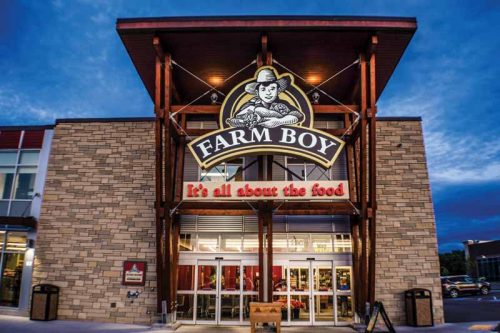 [2]
[2]When it comes to exterior signage, the shop believes high impact branding starts at the street or the skyline. The bulk of these projects include backlit signs, channel letters, monument and pylon signs, as well as wayfinding solutions.
Sign Media Canada (SMC): What is the history of the sign shop? How large is the facility today?
Bill Houston (BH): Twilight Signs started out as a small 279-m2 (3000-sf) industrial facility in 1989. Back then, there were few regulations, and the industry was largely occupied by small family businesses and others—what I would refer to as ‘a handyman’s special.’ At the time, the shop provided simple signage, consisting of channel and cut-out letters, awnings, neon signs, and custom projects. Today, we have a 2325-m2 (25,000-sf) large facility with 45 employees. The company recently opened an office in Shanghai to support the Asian and European markets. I am thrilled to see how far we have come. Our drive to create innovative products combined with a high level of professionalism has enabled us to achieve what we had envisioned nearly three decades ago.
SMC: What makes your company unique?
BH: Yes, we build signs, but the secret ingredient to award-winning results is more than a mere set of drawings. As a creator of both internal and external environments, we help our clients achieve brand consistency and a more holistic experience. Our team is extremely focused on the creative design part of the job, which enables us to hit a home run with all our products and services.
SMC: What type of signage does your shop primarily make?
BH: We believe in creating branded environments that not only drive sales, but also captivate our audiences and give them a reason to return. Our fabrication work comprises an eclectic mix of interior and exterior signage—from retail and restaurants to complex healthcare facilities. Some of our interior signage projects include directional and illuminated signs, modern Acrylishell letters, and silicone-edge graphics (SEG) FabriBright Slim lightboxes. We also create custom displays for retail businesses and tradeshows. When it comes to exterior signage, we believe high impact branding starts at the street or the skyline. The bulk of these projects include backlit signs, channel letters, monument and pylon signs, as well as wayfinding solutions.
SMC: What type of work have you been handling recently?
BH: The demand for digital signage is increasing by the day, and clients who expect to continue with a brick-and-mortar location in the future pose a serious challenge for businesses to enhance their overall customer experience in-store. Light-emitting diode (LED), transparent, and interactive liquid crystal display (LCD) screens are all part of this experience. We see vast opportunities beyond North America. In Europe and Asia, there is a lag in the customer experience and branding of store concepts. We have effectively used these gaps as areas to increase our business and have seen a growing interest in bringing new ideas and technologies to these markets.
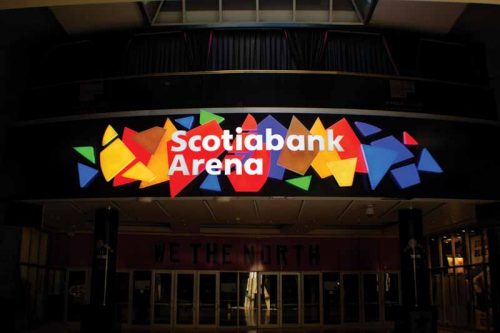 [3]
[3]As a creator of both internal and external environments, Twilight Signs helps its clients achieve brand consistency and a more holistic experience.
SMC: How much of the signmaking process is handled in-house? What equipment do you currently use to complete your projects?
BH: I can proudly say 85 per cent of our sales are a direct result of our in-house production, whereas specialty products are outsourced. Also, we have partners overseas who supply materials either unavailable in North America or at a competitive price, allowing us to resell to the same market at profitable rates. Currently, we use computer numerical control (CNC) machines, automated letter forming equipment, as well as large-format digital and 3D printers for our signmaking projects.
SMC: What does your planning and design process involve?
BH: At Twilight Signs, the process from inspiration to installation is four-fold: discover, design, plan, and build.
The first step involves collaborating with clients to understand their goals and requirements. This information helps the team complete initial research, including audits and code checks, early site surveys, and a review of brand standards to develop a project brief before diving into concept development and design exploration.
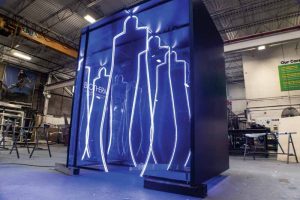 [4]
[4]Some of the sign shop’s interior signage projects include directional and illuminated signs, modern Acrylishell letters, and silicone-edge graphics (SEG) FabriBright Slim lightboxes.
Next, we move on to the design phase—this is where all the creative magic happens. Our team explores unique ways for extending the client’s brand into multiple dimensions. We ensure our innovative ideas in design, materials, and technology make the brand stand out from the rest. Together, we work through an iterative process to shape a space that is forward-thinking yet customer-centric. The third step includes proactive planning, which not only reduces the client’s workload, but also keeps them informed every step of the way. Experienced project managers are responsible for overseeing this stage—from concept development and design to site surveys, permits, and the final installation. Last but not least, our manufacturing capabilities enable us to make the leap from pixel to physical, with a focus on quality, efficiency, and speed. Our in-house team comprising skilled fabricators, welders, painters, technologists, and artisans help bring the client’s vision to reality. If one can imagine it, we can make it.
SMC: How is technology changing your business?
BH: Times have changed, and today, the biggest challenge is how online shopping is affecting in-store traffic. Customers do not need to go outside of their homes to buy products like they did 20 years ago. Almost all brick-and-mortar business owners are reinventing their client experience to inspire those visiting their shops. Physical spaces must be able to stimulate all the senses to draw customers out of their homes. That said, most of these senses cannot be stirred online, and this is where physical stores have an edge over the former. However, if businesses do not get this experience right in the first place, then the virtual aspect is perceived as adequate. Therefore, it is critical for companies to invest in creating experiential brand spaces that house cognitive and/or emotional values in their makeup if they wish to cultivate an ongoing relationship with their clients.
 [5]
[5]The team conducts an initial research, including audits and code checks, early site surveys, and a review of brand standards to develop a project brief before diving into concept development and design exploration.
SMC: What is the key to staying successful in this industry?
BH: For us, success is multi-faceted. Our creativity and trendsetting ideas help clients elevate their customer experience, which in turn draws traffic and drives sales. Also, effective communication combined with efficient project management techniques lead to a successful job. We deliver what we promise, and our team ensures they go the extra mile to achieve the desired results. Finally, timing and a little luck go a long way!
SMC: What are the future plans for your sign business?
BH: Growth is definitely on top of the list. Our capacity to design and implement branded spaces worldwide is increasing by the day. We work best with businesses that are focused on establishing themselves as industry leaders—this speaks to our future as well.
- [Image]: https://www.signmedia.ca/wp-content/uploads/2019/10/Twilight-Team-Aug19.jpg
- [Image]: https://www.signmedia.ca/wp-content/uploads/2019/10/Farm-Boy-2.jpg
- [Image]: https://www.signmedia.ca/wp-content/uploads/2019/10/Scotiabank-Arena-3.jpg
- [Image]: https://www.signmedia.ca/wp-content/uploads/2019/10/Biotherm-1.jpg
- [Image]: https://www.signmedia.ca/wp-content/uploads/2019/10/Mississauga-Gateway-Centre-2.jpg
Source URL: https://www.signmedia.ca/twilight-signs-designing-brands-as-experiential-spaces/




